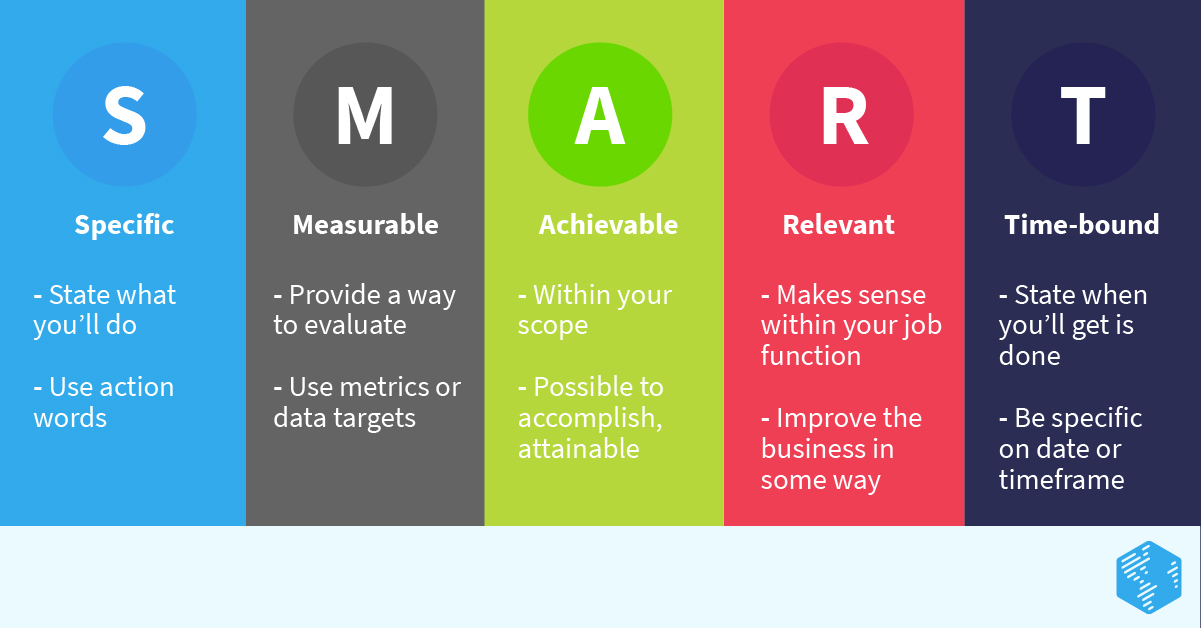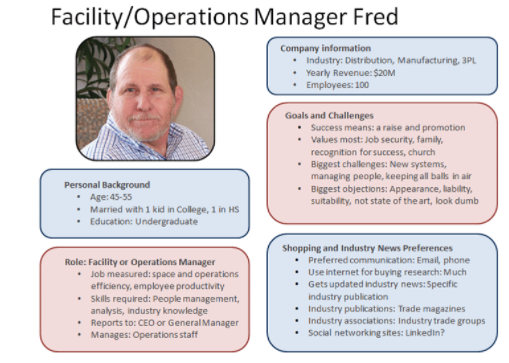Often, you’ll see manufacturing companies that have spent thousands of dollars on marketing but with poor results.
And those companies may ask: is marketing worth all that investment? However, if you scratch deeper, you’ll find a common theme in these poor marketing performances.
Usually, these companies have a poor or no manufacturing marketing plan. They just throw everything at the wall and see what sticks.
Meanwhile, having an effective marketing plan is a foundation for successful marketing campaigns. What we’re saying is: create a marketing plan before you run campaigns.
Having an effective marketing plan is a foundation for successful marketing campaigns. Share on XIn this guide, you’ll know what a manufacturing marketing plan is all about. Furthermore, you’ll learn 7 steps to create an effective plan and have a template you can use.
What is a manufacturing marketing plan?
A manufacturing marketing plan is a document that contains vital details necessary to run successful marketing campaigns for a manufacturing company. These details include marketing goals, marketing strategy, buyer persona, key performance indicators, and more.
While you may have the urge to start running your campaigns immediately, creating a marketing plan is usually beneficial. First, this plan helps you foresee your campaigns for the next month, quarter, or year.
Of course, you can’t predict every future event accurately. Nonetheless, without a plan, you’ll waste so much time, money, and energy running inefficient campaigns. Instead, a marketing plan provides a sense of direction for your campaigns.
Without a marketing plan, you’ll waste so much time, money, and energy running inefficient campaigns. Share on XSecond, you can make better marketing decisions when you have a plan. Should you focus more on email marketing or social media? Should you attract manufacturing leads on LinkedIn or Facebook?
These and many more questions will come up while running marketing campaigns. When they come up, having a solid marketing plan makes your decision-making easier and better.
Another vital benefit of having a manufacturing marketing plan is that, ultimately, it can lead to better marketing results. How do you create a marketing plan for your manufacturing company? Here are 7 steps to follow to create a marketing plan for manufacturing company:
1. Define your manufacturing marketing goals
Even though two manufacturing companies may have similar products, they want different results. What results do you want as a result of marketing your products?
One of the first things that one needs to do while drafting marketing plan for manufacturing company is to define clear marketing goals. Of course, your goals can also depend on the duration of your marketing plan.
For instance, a marketing plan for a year will contain several types of goals. Meanwhile, a monthly plan will look different.
What are the common types of goals you can set for your manufacturing company?
- Creating brand awareness
- Increasing website traffic
- Increasing website conversions
- Generating leads
- Acquiring customers
- Generating more sales
These are some goals you’ll find today. But setting a goal goes beyond just having a general aim.
Your goals have to be SMART. This means it has to be:
- Specific
- Measurable
- Achievable
- Relevant
- Time-bound
So, just saying you want to acquire leads is a poor way to set goals. For instance, if you want to acquire leads, your goals can be: acquire 1,000 leads in the fourth quarter of 2021.
Again, this goal has to be relevant to your business, and you should have the capability to achieve it. By setting specific and relevant goals, your marketing campaigns will have a focus.
Furthermore, these goals are a way to judge the effectiveness of your marketing campaigns.
2. Create buyer personas for your manufacturing company
One prerequisite to running a successful marketing campaign is to know your target audience. When you know your target and what they need, you can craft more effective messages to convert them.
But beyond just ‘knowing’ your ideal customer, you need a documented profile about them. Then, you can always reference this profile before creating marketing campaigns.
A buyer persona is a document that contains vital details about your ideal customer. This helps you understand their needs and messages that are likely to resonate with them.
Some details to have in your buyer persona include:
- Name
- Age
- Income
- Location
- Job title
- Pain points
- Dislikes
- Ambitions
- Hobbies
RELATED: What Is Persona and How to Market to Multiple Personas
Since manufacturing products are B2B products, you’ll need to create a few buyer personas for a target account. This is because there are a few people involved in the decision to buy your product.
For instance, the product user and an executive will be involved in selecting a product. Naturally, they’re looking at different factors to make their decisions.
For example, the product user may consider ease of use more while the executive may consider pricing more. You have to provide the relevant information to each party.
So, you can create as many buyer personas as you want. How do you get the information to include in your buyer persona?
First, you can include the details of who you want your ideal customer to be. Second, you can look at your current customer base and check for common trends.
Here’s a detailed buyer persona example from Buffer:
Once you have your buyer personas, you can add them to your marketing plan for manufacturing company.
3. State your current marketing performance
If you want to improve your marketing results, then you have to know your current performance. This current performance will be your baseline for future marketing campaigns.
Say you want to create a marketing plan for the next quarter, you have to consider your performance for the ending quarter. In most cases, the metrics you consider will depend on the goals you want to set for the new quarter. For example, if you want to acquire more leads and customers, what’s your performance in the previous period?
Once you have these numbers, you can state them in your marketing plan. Then, you can state the percentage increase you want to achieve in the next period.
4. Outline marketing campaign tasks and timeline
In your manufacturing marketing plan, this is probably the most crucial aspect. Anybody viewing your plan will likely dwell on this aspect.
What pieces of information should be present here?
Marketing strategies
While there are many marketing strategies, you don’t have to employ all of them in your marketing campaigns. All you have to do is use strategies to help you reach your ideal buyers effectively.
Whatever strategy you want to use, it’s vital to document them here. According to a CoSchedule survey, marketers with a documented strategy are 313% more likely to report success.
Some common marketing strategies you can use for your marketing campaigns are:
- Content marketing
- Social media marketing
- Search engine optimization
- Pay-per-click (PPC) marketing
- Email marketing
Sure, you don’t have to use all these strategies to promote your manufacturing products. First, you have to consider the best strategy to reach your ideal audience.
RELATED: Definitive Guide to Marketing Your Manufacturing Company
If you want to create a thorough marketing plan, you can create a plan for each strategy. What goals do you have for email marketing? What email campaigns will you run during this period?
Apart from your marketing strategy, you need to state the channels you want to use. For instance, not every social media channel is suitable to promote your manufacturing company.
You may find LinkedIn and Twitter more effective than Pinterest and Instagram. Here’s a LinkedIn post of a product featuring Huawei’s technology:
Likewise, you can execute content marketing across different channels. This can be through your blog posts, guest posts, and promoted posts on industry websites.
See General Electric’s blog:
Ultimately, your marketing strategy should be detailed enough to explain the approach to your campaigns.
Marketing tasks
For every marketing strategy, there are tasks to be executed. Some common tasks for marketing strategies include:
- Content marketing: creating content for blog posts, product pages, landing pages, and more.
- Social media marketing: creating social media copy, images, videos, and publishing schedule.
- Search engine optimization: optimizing posts for target keywords, improving your page structure, building backlinks, email outreach for backlinks, and more.
- PPC marketing: creating ad copy, images, and ad landing pages.
- Email marketing: creating email copy, designing emails, building email sequences, and more.
After specifying these tasks, you have to state the timeline to perform them. This includes daily, weekly, and monthly tasks.
5. Perform competitive research
No matter how refined your marketing strategy may be, you can still learn one or two things from your competitors. You’ll find competitors that execute their overall marketing strategies better than you do. In some cases, some competitors execute particular strategies better.
No matter how refined your marketing strategy may be, you can still learn one or two things from your competitors. Share on XWhatever the case, you need to consider high-performing competitors in your marketing plan. From your research, list high-performing competitors.
Then, you have to state their key performance indicators (KPIs) as compared to yours. After that, you can analyze their marketing strategy.
In most cases, you’ll have to perform reverse analysis since your competitors won’t display their strategy openly. Therefore, you have to watch the actions they take and predict their strategy from those actions.
CHECK THIS TOO: Best Digital Marketing Strategies for Manufacturers
6. Define your marketing budget
Every marketing department has lofty ideas they want to execute. But most of them have to shelf those ideas because of their budget.
In fact, one of the great benefits of creating a marketing plan is that you can cut your campaigns according to your budget. You can make a cost forecast and leave space for miscellaneous spending.
In your marketing plan, you should specify your overall marketing budget. Then, you have to state possible marketing costs over the period in consideration.
These costs include:
- Cost of marketing tools
- Cost of services
- Employee hours
- Overhead costs
Here’s a marketing budget template from Smart Insights:
Beyond this, you can also split your budget across different marketing channels. By defining your budget and allocating it effectively, you can create a feasible marketing plan.
7. Define the process to track performance
This is the bitter truth: not all marketing campaigns produce intended results. But how do you know whether you’ve succeeded or failed in achieving your goals?
Your marketing plan needs to include the process to track your performance. While setting your goals and stating your marketing strategy, your key performance indicators (KPIs) become obvious.
Here, you can state the metrics to measure those KPIs. To do this effectively, you’ll need the right tools.
Again, the tools you need depend on the marketing strategies you want to execute. Usually, most tools you use to run your marketing campaigns will provide analytics.
For example, email marketing software will provide the metrics you need from your email campaigns. For your website, Google Analytics is a tool that will provide most of the metrics you need.
In this section, you can state all the tools you need and the metrics you’ll measure on them. Beyond that, you need to indicate how often you’ll track these KPIs.
Manufacturing marketing plan template
Creating your manufacturing marketing plan from scratch can be a lot of work. Here is a blueprint by OneIMS that will achieve your revenue milestones and marketing goals. Download now.
Conclusion
Launching marketing campaigns without a plan is one of the fastest ways to failure. That’s why your manufacturing marketing plan is one of the first steps to take for successful campaigns.
In this guide, we’ve provided tips that will help you create an effective marketing plan. In addition to that, you can download our template and edit it to your unique business needs.
Do you need help creating your manufacturing marketing plan? You can reach out to us!






































